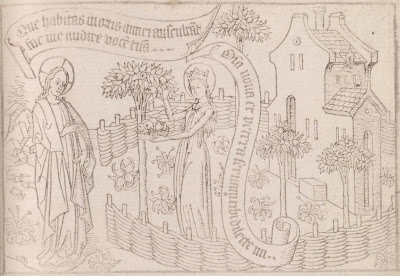For my family and me this is Day 109 of shelter-at-home, and although infection rates are going down here and our state is cautiously reopening (and I do appreciate that it’s cautious, here), without a vaccine there’s really no reason to think we should be going out and mixing freely any time soon. So let’s think about some cool words for ways we try to protect ourselves from disease and other evils.
quarantine - In the case of covid-19, this is pretty much the best we’ve got, and it’s fascinating to me that we’re forced to rely on the same only method known to the days of bubonic plague. After the Black Death killed about a third of the population of Europe in 1347-50, port cities started requiring incoming ships to remain isolated for a period before there could be any contact between the ships and the port. The first was Ragusa (now Dubrovnik, Croatia) demanding a 30-day-long trentino period (from Italian for “30”). The practice spread to other cities, and lengthened to 40 days, which was called quarantino, from Italian for “40.” (Why 40 days, anyway? There are various possibilities, but no one knows for sure.) In English there had been versions of the word quarantine since the 14th century, from Latin roots and referring to the 40 days a widow was allowed to remain in her dead husband’s house and the 40 days Jesus fasted in the desert, but our modern meaning apparently came to English from Venice in the 1660s.
amulet - We got this word from Pliny’s writings about it, and although it first appears in English in the mid-fifteenth century, it doesn’t appear to have really stuck until about 1600.
charm - (c. 1300) This began as an incantation rather than an object, and comes from a Latin root meaning “to sing.” The OED attributes its first use as a magical object to Spenser’s Faerie Queene in 1596. (If you would like to learn a particular incantation believed to cure disease - and a version of it in song - be sure to read my previous post Say the Magic Word.)
talisman - (1630s) We get this from French, from Arabic, from Greek, and its particular sense is that it must be made with special rites or observances that give it its power.
apotropaic - An excellent word from Greek (entering English in 1883), it means “having the power of averting evil influence.”
prophylactic - (1570s) Originally describing medicines and meaning “tending to prevent disease” from Middle French, from a Greek root meaning “to guard.” (Its use as a noun dates to the 1640s, but it wasn’t used to mean “condom” until 1943. Interestingly, condom itself has an unknown derivation. The word first appears in 1706, and in 1709 the story first appears that it was named for a British doctor who presumably invented or advocated its use. However, no evidence for such a doctor has ever been found.)
 phylactery - (late 14th century) From the same Greek root, by a slightly different route, this can mean the tefillin of Judaism. It was chosen as the Greek Bible translation for the Hebrew word because of its broader original meaning as another synonym of amulet, as well as its use in Latin to mean “reliquary.” (It also has a fun, apparently unrelated meaning of the speech scrolls occasionally seen in Medieval art. Perhaps the connection is the idea of important words written on little strips of parchment? And another fun word for a speech scroll is banderole.)
phylactery - (late 14th century) From the same Greek root, by a slightly different route, this can mean the tefillin of Judaism. It was chosen as the Greek Bible translation for the Hebrew word because of its broader original meaning as another synonym of amulet, as well as its use in Latin to mean “reliquary.” (It also has a fun, apparently unrelated meaning of the speech scrolls occasionally seen in Medieval art. Perhaps the connection is the idea of important words written on little strips of parchment? And another fun word for a speech scroll is banderole.)
When in the fantasy vein, I’m all in favor of amulets, charms, and talismans. They make an excellent magical element to explore: Do they work in that universe, or are they merely superstition? And if they do really work, how? Can anyone get hold of them, or only the wealthy, or the magically endowed? Is their purpose primarily protection, or do they confer other magical powers?
 In our universe, however, I’ll put my faith in the apotropaic power of quarantine, face masks, and frequent hand-washing. Hang in there, everyone, and keep taking care of one another by keeping up the basic precautions that keep each other safe.
In our universe, however, I’ll put my faith in the apotropaic power of quarantine, face masks, and frequent hand-washing. Hang in there, everyone, and keep taking care of one another by keeping up the basic precautions that keep each other safe.
[Pictures: Engraving from Execitatio de amuletis by Julius Reichelt, 1676 (Image from Österreichische Nationalbibliothek);
Arabic wood block amulet, 12-13th century (Image from The University of Utah);
The Bride Nourishes the Bridegroom, wood block print from Canticum canticorum, c 1465 (Image from The Morgan Library);
The Bride Nourishes the Bridegroom, wood block print from Canticum canticorum, c 1465 (Image from The Morgan Library);
Circular amuletic design, woodblock print by Pasang Tsering, 2004 (Image from The British Museum).]



No comments:
Post a Comment